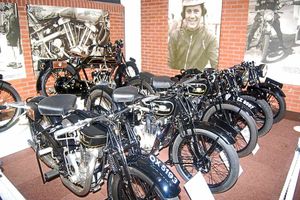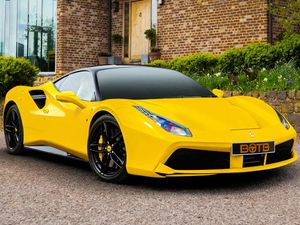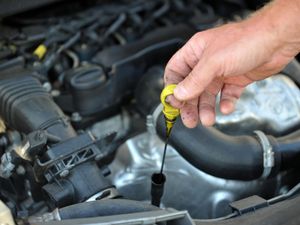National Motorcycle Museum marks 30 year birthday
Thousands of enthusiasts converged on the West Midlands to mark a milestone in the history of the National Motorcycle Museum.

The museum, at Bickenhill on the outskirts of Birmingham, has grown from a private collector's dream to the biggest motorcycle museum in the world – rising phoenix-like from a disastrous fire along the way.
The star-studded event marked 30 years since the museum opened on its eight-acre site under the leadership of millionaire enthusiast Roy Richards to showcase a unique private collection of 200 machines.
Today there are more than 650 bikes, and the museum attracts upwards of 250,000 visitors a year.
Among those at the event were former and current motorcycle racers, including Midlander Percy Tait – who developed and tested many of Triumph's race-winning bikes – along with former Grand Prix rider Steve Parrish and 21-times Isle of Man TT winner John McGuinness.
But the real stars of the show were some of the rare and unique British bikes covering a century of motorcycling history, including the golden era of the 1930s to the 1960s when such machines ruled the world of two wheels due to their ingenuity, engineering and performance.
They include large collections from some of the best-known British manufacturers such as the Midlands companies Triumph, BSA, and Norton, as well as long-gone names such as Sunbeam, AJS and Clyno which were based in Wolverhampton.
Many of them are TT and Grand Prix winners, as well as the everyday bikes ridden by our fathers and grandfathers.
Some of the genuinely unique examples include the 1956 Triumph Streamliner which, using a standard 650cc twin engine, achieved a world record speed of 214mph in the hands of Johnny Allen at the Bonneville Salt Flats in Utah – an event still remembered in the name of one of the company's best-selling machines.
There is also the 1939 Brough Superior Golden Dream, a 1,000cc four-cylinder, horizontally opposed engine, four-speed gearbox and shaft drive – the showstopper at the Earls Court Show.
Other bikes preserved for posterity include perhaps not such well-known names such as BAT, Centaur, Cotton, Matchless, Coventry Eagle, DMW, Francis-Barnett, Lea-Francis, Douglas, NUT, Vincent and Velocette.
One of the more unusual machines is the 1912 Wilkinson Luxury, powered by a 850cc four-in-line engine designed to allow the rider to travel in – quite literally – armchair comfort.
There are also sections devoted to bikes built specially for the military and police, as well as the iconic yellow and black Chater-Lea combination made famous as the AA patrolman's mount.
But one machine in particular seems to stand out as representing the ethos of the National Motorcycle Museum and its homage to a once world-beating British industry.
Slippery Sam is the nickname of a 750cc Triumph, powered by the company's trademark three-cylinder engine, which won five production TT races in a row between 1970 and 1975 – a feat unlikely ever to be beaten.
It was virtually destroyed in the disastrous 2003 fire at the museum. And while the building was undergoing a £20 million rebuild, Sam was also rebuilt – with original parts – by Les Williams and his team of mechanics who had prepared and developed Sam during its racing heyday.
By good fortune, the bike had been in use for demonstrations with a replica fairing just before the fire, while the irreplaceable original bodywork was safely stored in Les's loft.
Sam was fired up and ridden in to the museum's plush conference hall by seven-times TT winner Mick Grant – his first victory was on the Triumph – where Les and his team were waiting.
The name Slippery Sam was actually a reference to Percy Tait, for many years Triumph's senior road tester and development man as well as a race rider, who later worked for Suzuki and then ran a car dealership in Kidderminster.
Just before the 1970 Bol d'Or 24-hour race in France, Triumph had switched from traditional mineral oil to the high performance Castrol R. It resulted in Tait – already nicknamed Sam by the crew – having to make several unscheduled pit stops as both he and the bike were plastered in the contents of the sump.
Pictured: Part of the museum's collection of pristine Sunbeams from the Wolverhampton factory.





